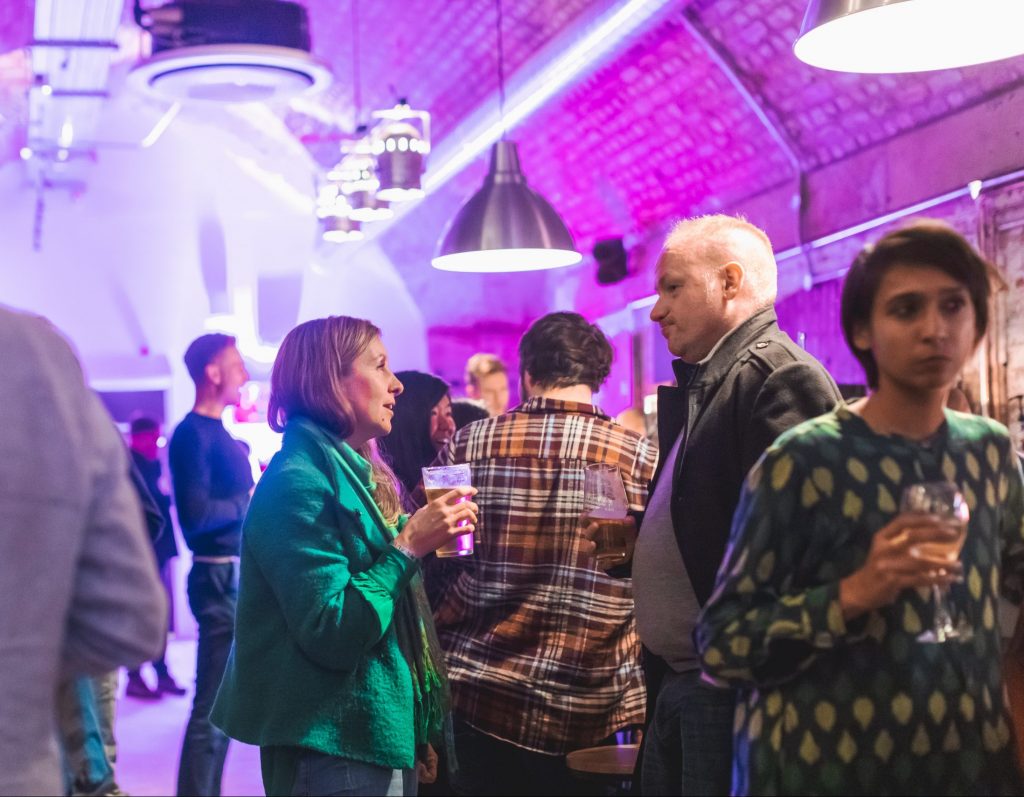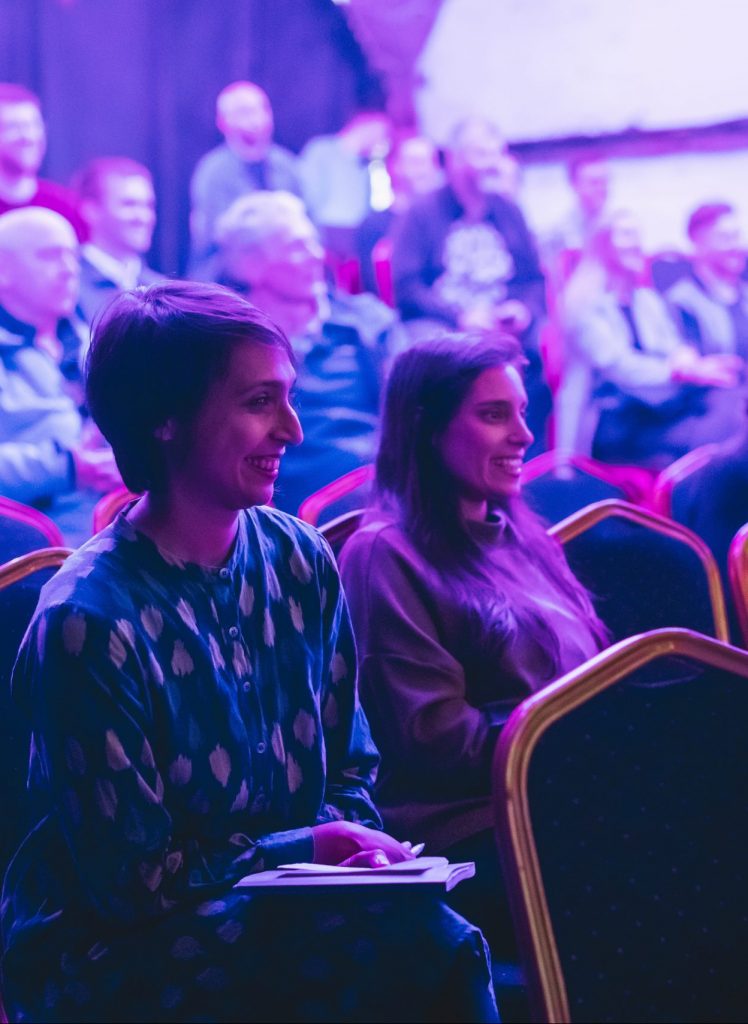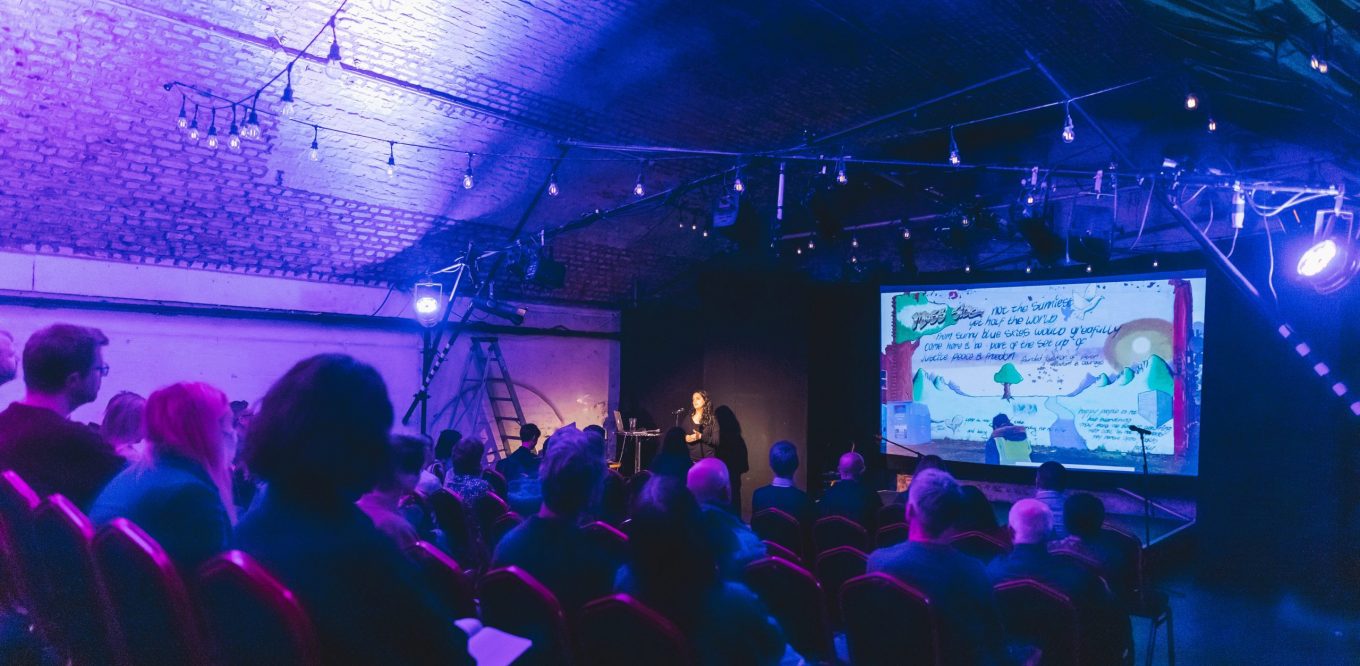On the 10 November, to coincide with COP26, a new group of northern urbanists held their first event; Design and Sustainability in the North. Vicky Payne explains the origin story of Common Good and the need for better dialogue around development in a northern context.
 On a dark November afternoon, an audience of built environment professionals gathered in Manchester for a mini festival exploring design quality and sustainability in the north. What is a mini festival you might ask? Honestly, we’re not sure, but it included bitesize talks from fabulous people doing amazing things, a keynote presentation from Pooja Agrawal of Public Practice, a panel looking at key challenges and opportunities through the lens of a real site, a film screening, pies, beers and a lot of laughs.
On a dark November afternoon, an audience of built environment professionals gathered in Manchester for a mini festival exploring design quality and sustainability in the north. What is a mini festival you might ask? Honestly, we’re not sure, but it included bitesize talks from fabulous people doing amazing things, a keynote presentation from Pooja Agrawal of Public Practice, a panel looking at key challenges and opportunities through the lens of a real site, a film screening, pies, beers and a lot of laughs.
Not everything went to plan (we had a few technical hitches) but that was to be expected when the event and the group organising it had their inception only a few weeks before. “Let’s have our first event coincide with COP26!” we said. “Ok, but let’s keep it simple”. Flash forward and we’re hosting a six-hour multi-component mini festival. You can’t say we’re not ambitious.

Who is this “we” I keep referring to? Well, we’re not quite sure about that either. We have a name (Common Good), and we have a mission (“to improve quality outcomes in the north through discourse, networking and sharing knowledge”) but we’re currently made up of an amorphous and expanding group of consultants, developers, local authority staff and civil servants, which is part of what makes it so exciting!
Let me take you back to where it all began. You may recall that the Summer 2021 edition of Urban Design Quarterly was called The Northern Powerhouse. Guest edited by the wonderful Stephen Gleave, it sought to highlight the exciting and challenging things happening in the north of our green and pleasant land. Stephen sought out an excellent bunch of contributors and made the fatal error of bringing us together over a series of Zoom calls during lockdown.
He got more than he bargained for. The journal had to be expanded to accommodate an influx of enthusiastic northern content, a selection of articles were recorded for broadcast across two episodes of the 50 Shades of Planning Podcast and a group of us decided that we were nowhere near done with talking to each other or talking about quality outcomes for the north. So Common Good was born.
You might be wondering why such a group is needed; surely the north isn’t so different from anywhere else? Isn’t it reductive to lump one half of the country under a single geographical identifier? And aren’t there useful commonalities that link parts of the north and south, like deprivation?

The north is identifiably different from the south. A 2019 IPPR report [i] stated that the UK is more regionally divided than any comparable advanced economy, with a clear north-south divide. Their analysis found differences in productivity, income, unemployment, health, and politics. Spending that might help address such divisions has not been forthcoming. The Northern Powerhouse Independent Economic Review identified under investment in transport as a particularly important factor, yet the Integrated Rail Plan published on the 18 November 2021 has been branded ‘woefully inadequate” by Transport for the North. Investment in planning and development lags too; a 2019 RTPI report [ii] identified that spending on planning per person living in the southeast and east of England was double the spending per person in the north of England or the west midlands.
So, when trying to deliver good design, address the climate crisis and improve the lives of the population in the north, built environment practitioners are working in a challenging situation. This is a problem when discourse and good practice case studies are largely focused around London and the south. It’s not that we can’t learn anything from other areas, but we need an equally exciting, uniquely northern conversation; a forum in which to explore our own precedents, highlight our own successes and tackle our own unique challenges.
It is reductive to view the north as a homogenous lump of poor land values, disjointed infrastructure, and pasties. There is extreme wealth here and extreme poverty, inspirational design, and soul-destroying bilge. So, our plan is for Common Good to be an umbrella under which localised cells at different scales can assemble to discuss, network, and learn, feeding from and into a shared online repository of collective knowledge.
There will be commonalities between the challenges facing northern locations and places in the rest of the UK. We know from the 2021 Chief Medical Officers Annual Report[iii] for example, that poor health outcomes link many coastal communities. Although we are grounding ourselves in the north, and more specifically in the local areas where we individually live and work, we want to share everything we learn and create with anyone who might find it helpful.
So, what now? We are working to build the architecture of an organisation that is open, transparent, inclusive, and positive, while developing more events to build on the momentum of our first. If you’d like to see how we get on, attend future events or get involved, follow us on Twitter @CommonGood_ or email commongoodgm@gmail.com.
Vicky Payne is a Young Urbanist and Associate Principal at URBED
References:
[i] Divided and connected: Regional inequalities in the North, the UK and the developed world – State of the North – 2019 – IPPR[ii] Resourcing Public Planning – 2019 – RTPI
[iii] Chief Medical Officer’s annual report 2021: health in coastal communities






